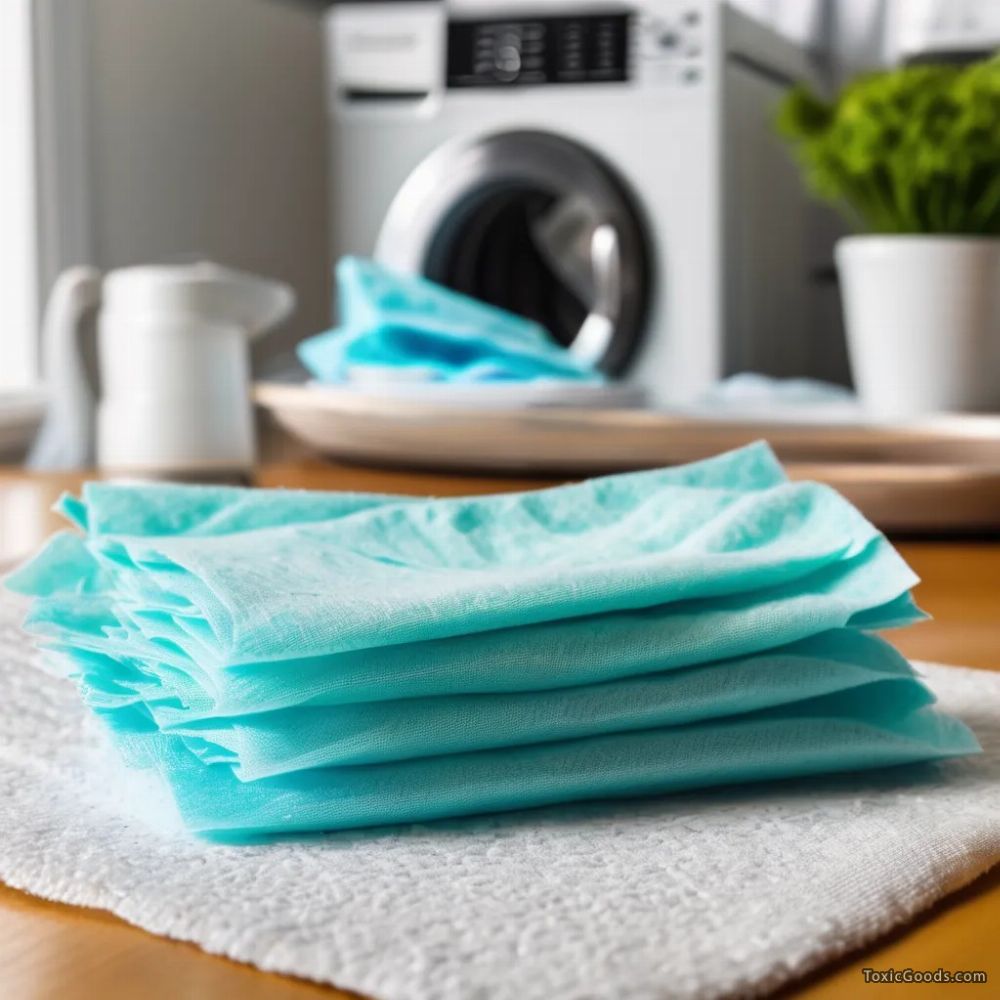Dryer Sheets: The Chemicals in Your Laundry
 That fresh, floral scent from your dryer sheets comes at a cost—most commercial dryer sheets contain a cocktail of chemicals that cling to your clothes, seep into your skin, and pollute the air you breathe. While they promise soft, static-free laundry, the toxic ingredients in these convenient sheets can trigger allergies, disrupt hormones, and even harm pets.
That fresh, floral scent from your dryer sheets comes at a cost—most commercial dryer sheets contain a cocktail of chemicals that cling to your clothes, seep into your skin, and pollute the air you breathe. While they promise soft, static-free laundry, the toxic ingredients in these convenient sheets can trigger allergies, disrupt hormones, and even harm pets.
Dryer sheets work by coating fabrics with a thin layer of chemicals, including quaternary ammonium compounds (quats), synthetic fragrances, and phthalates. These substances don’t just stay on your clothes—they rub off onto your skin, release fumes into your home, and linger in the environment long after your laundry is done.
What’s Really in Dryer Sheets?
Most dryer sheets contain:
- Quaternary Ammonium Compounds (Quats): Used to reduce static, these chemicals are linked to asthma and skin irritation.
- Phthalates: Often hidden under “fragrance,” these hormone disruptors can affect reproductive health.
- Synthetic Musks: Accumulate in body fat and have been found in breast milk.
- Benzyl Acetate: A solvent linked to respiratory issues.
When heated in the dryer, these chemicals become airborne, sticking to fabrics and releasing volatile organic compounds (VOCs) into your home. Over time, repeated exposure can lead to chronic health issues.
How Dryer Sheets Affect Your Health
Skin Reactions
- Rashes, itching, or eczema-like irritation from direct contact with chemical residues.
- Increased sensitivity in people with allergies or sensitive skin.
Respiratory Problems
- Headaches, dizziness, and nausea from inhaling synthetic fragrances.
- Aggravated asthma or bronchitis symptoms.
Hormonal Disruption
- Phthalates mimic estrogen, potentially leading to hormonal imbalances.
- Long-term exposure has been linked to fertility issues.
Harm to Pets
- Cats and dogs are especially vulnerable to essential oils and synthetic fragrances.
- Grooming after lying on dryer-sheet-treated bedding can lead to poisoning.
Environmental Impact
Dryer sheets don’t just affect your home—they contribute to broader pollution:
- Chemicals wash off in laundry water, contaminating waterways.
- Synthetic musks persist in the environment, accumulating in fish and wildlife.
- The plastic-like coating on many dryer sheets doesn’t fully break down, adding to microplastic pollution.
Safer Alternatives
If you love soft, static-free laundry but want to avoid toxins, try:
✔ Wool Dryer Balls – Natural, reusable, and reduce static.
✔ White Vinegar – Adds softness and neutralizes odors.
✔ Baking Soda – Helps with odor removal and softening.
✔ Essential Oils (Used Sparingly) – A drop or two on dryer balls for light fragrance.
Chemical Properties & Health Effects
| Chemical | Purpose | Health Risks | Environmental Impact |
|---|---|---|---|
| Quaternary Ammonium | Reduces static | Asthma, skin irritation | Toxic to aquatic life |
| Phthalates | Fragrance fixation | Hormone disruption | Persists in water systems |
| Benzyl Acetate | Solvent | Respiratory irritation | Contributes to air pollution |
| Synthetic Musks | Long-lasting scent | Bioaccumulation in body fat | Harms marine ecosystems |
References and Sources
- Environmental Working Group (EWG) – Guide to Healthy Cleaning
Analysis of laundry product ingredients and health risks.
URL: https://www.ewg.org/guides/cleaners - National Institutes of Health (NIH) – Phthalates & Health
Research on hormone disruption from common household chemicals.
URL: https://www.ncbi.nlm.nih.gov/pmc/articles/PMC4128401/ - American Lung Association – Indoor Air Pollution
Effects of synthetic fragrances on respiratory health.
URL: https://www.lung.org/clean-air/indoor-air
